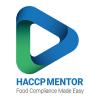I think there is general agreement that PRPs , oPRPs and CCPs are control measures meaning that these are associated with actions or activities that prevent or eliminate a food safety hazard, or reduce it to an acceptable level. Also most folks may only want to include CCPs and oPRP in that definition.
My question is this, for CCP life is easy , each CCP is associated with a critical limit statement but for an oPRP what is the correct language to use in the hazard analysis to say that a similar statement or specification is needed ( e.g 100 micron screen, negative allergen test) to describe the thing driving the oPRP? Thinking of Form 10 and FSEP
- Home
- Sponsors
- Forums
- Members ˅
- Resources ˅
- Files
- FAQ ˅
- Jobs
-
Webinars ˅
- Upcoming Food Safety Fridays
- Recorded Food Safety Fridays
- Upcoming Hot Topics from Sponsors
- Recorded Hot Topics from Sponsors
- Food Safety Live 2013
- Food Safety Live 2014
- Food Safety Live 2015
- Food Safety Live 2016
- Food Safety Live 2017
- Food Safety Live 2018
- Food Safety Live 2019
- Food Safety Live 2020
- Food Safety Live 2021
- Training ˅
- Links
- Store ˅
- More













